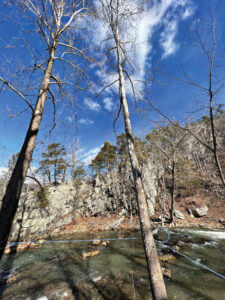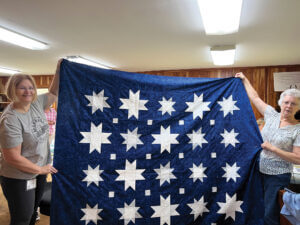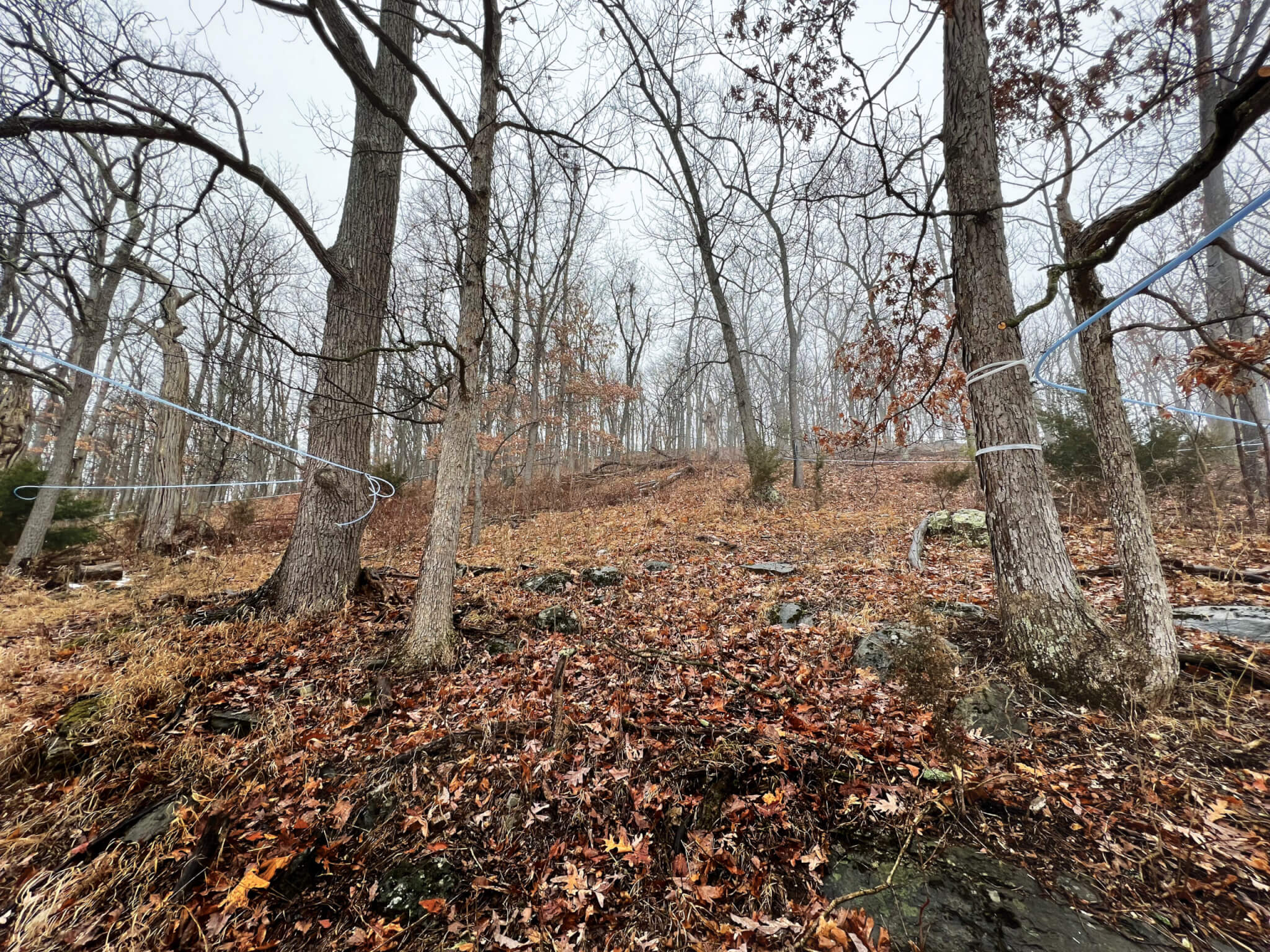
West Virginia is gearing up for the maple season, and December 17 marks the beginning of the season’s celebrations.
This story was originally published in the December 2023 issue of Wonderful West Virginia. To subscribe, visit wonderfulwv.com.
Written by Devin Lacy
Photographed by Nikki Bowman Mills
You don’t have to be an expert to know the basics of maple syrup: It’s made from the sap of maple trees and tastes great when drizzled over a tall stack of warm pancakes on a lazy Saturday morning. And while we often think of places like Canada and Vermont as being the main sources of the syrupy goodness, West Virginia’s maple industry is booming.
Approximately 13,000 gallons of syrup were produced in West Virginia in 2022 from 77,000 taps, according to the West Virginia Department of Agriculture. While it’s a small drop in the sap bucket when compared to the 5 million gallons produced nationwide, it’s a number we can expect to see grow as more and more people discover the untapped potential in their own backyards.
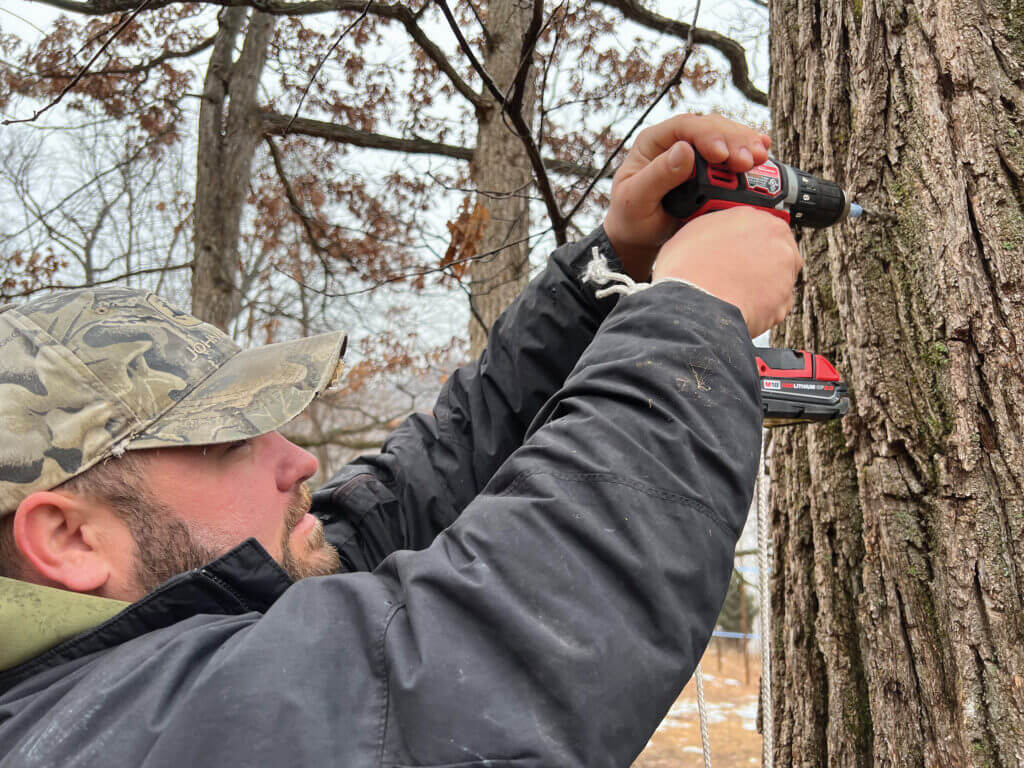
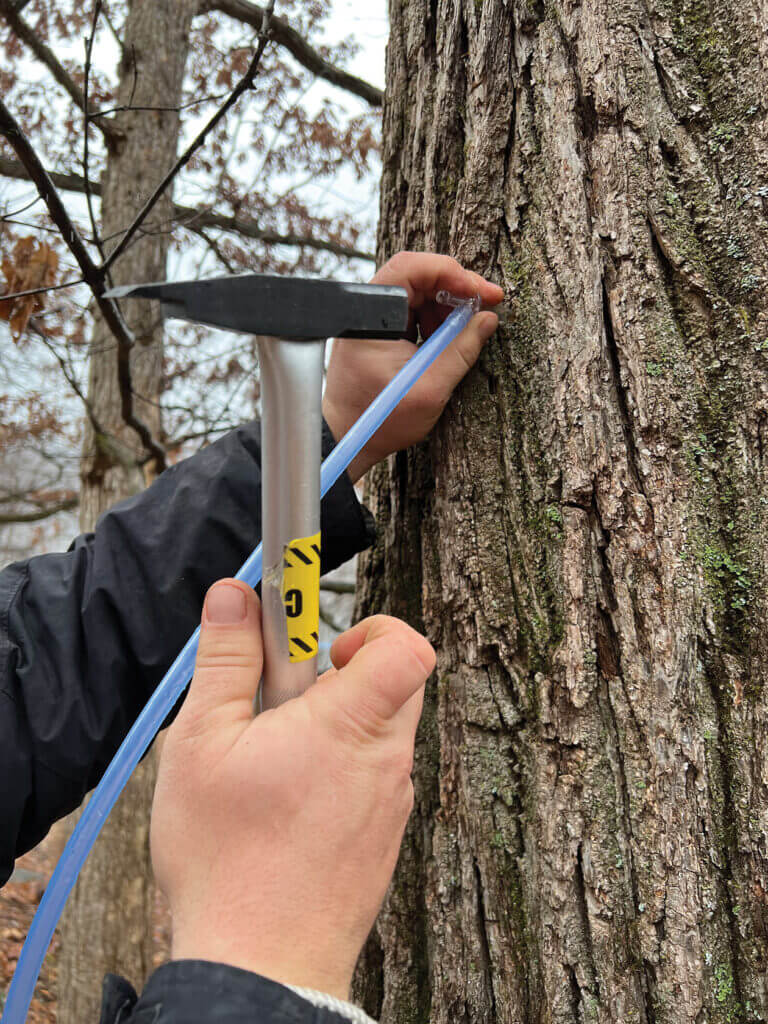
and love.
To bring more attention to the creative folks who are crafting maple bliss for our consumption, celebrations take place around the Mountain State to spread knowledge regarding the industry while showcasing and supporting the many local producers within our borders.
Making Maple
The process of tapping maple trees and turning the sap that pours forth into a delicious syrup is an old and familiar one that goes back to the practices of the early Indigenous people. While maple syrup can be made from a number of maple tree varieties, each of which provides unique flavors, the sugar maple is the one most commonly used—and it just happens to be the West Virginia state tree since 1949.
The process has been tried and tested, with the methodology perfected to a science by many of our
producers. Typically, a drill bit the size of the tap intended for sap collection is used to drill 1.5–2 inches into a crevice in a tree’s bark. The spout is then carefully inserted into the tree and connected to a food-grade container by tubing to collect the sap that will begin to flow. Maple saps typically run best during periods when the temperature at night drops below freezing and rises the following day to a crisp 40°.
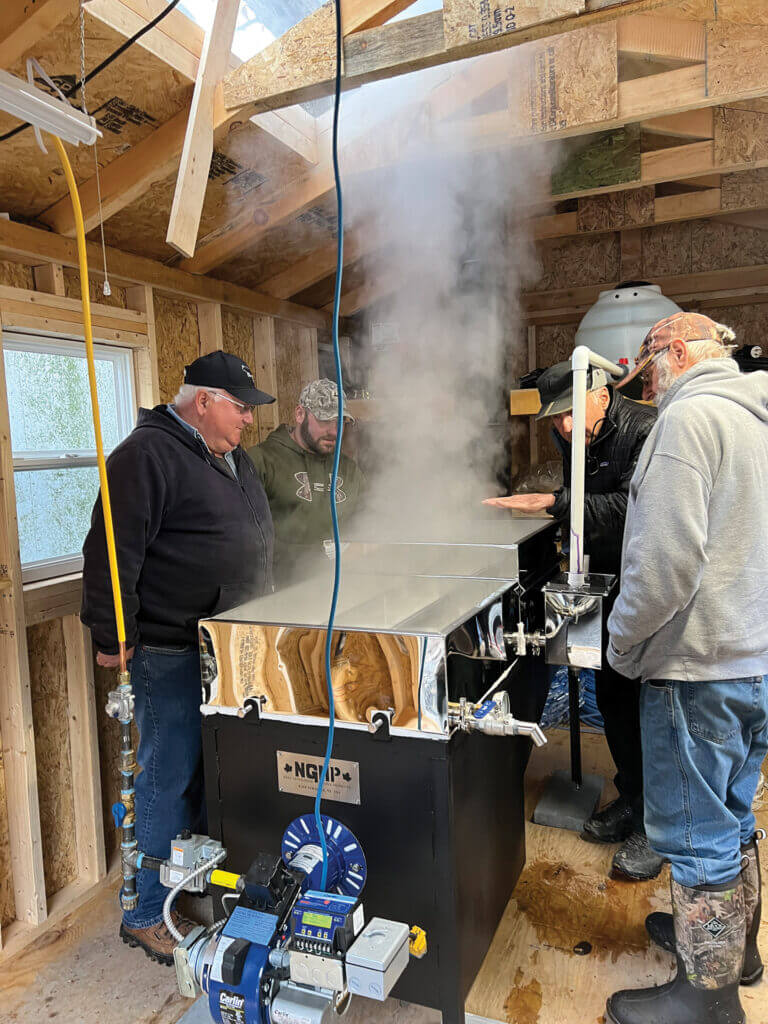
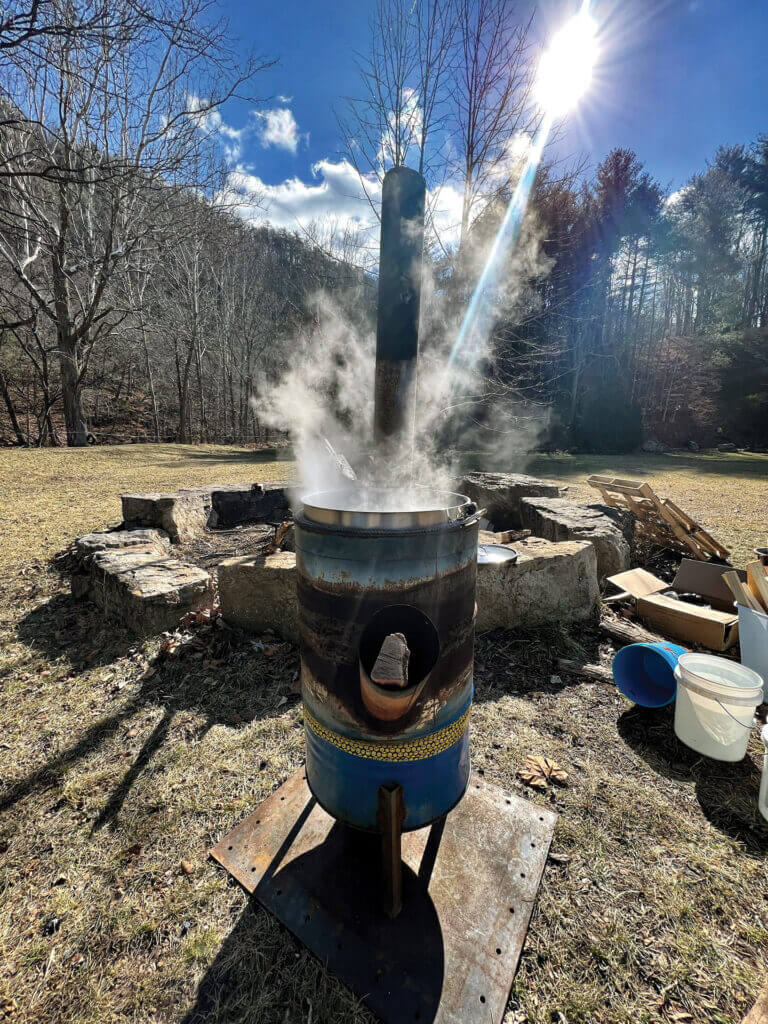
At one point in time, the collected sap would primarily be boiled so that the water would become separated out of the sap and evaporate, concentrating the sugars into a sweet syrup. Now, thanks to modern technological advancements, many syrup producers have moved to reverse osmosis, a process in which foreign matter and other contaminants are extracted from water through a semipermeable filter system. Either process is effective when it comes to removing the water from the sap—it’s just a matter of preference that results in the beautifully fragrant product we love.
A National Holiday
National Maple Syrup Day falls on December 17 each year, a date peculiarly outside the typical February and March tapping season. However, that doesn’t mean the national holiday can’t be used to promote the maple syrup industry here in West Virginia.
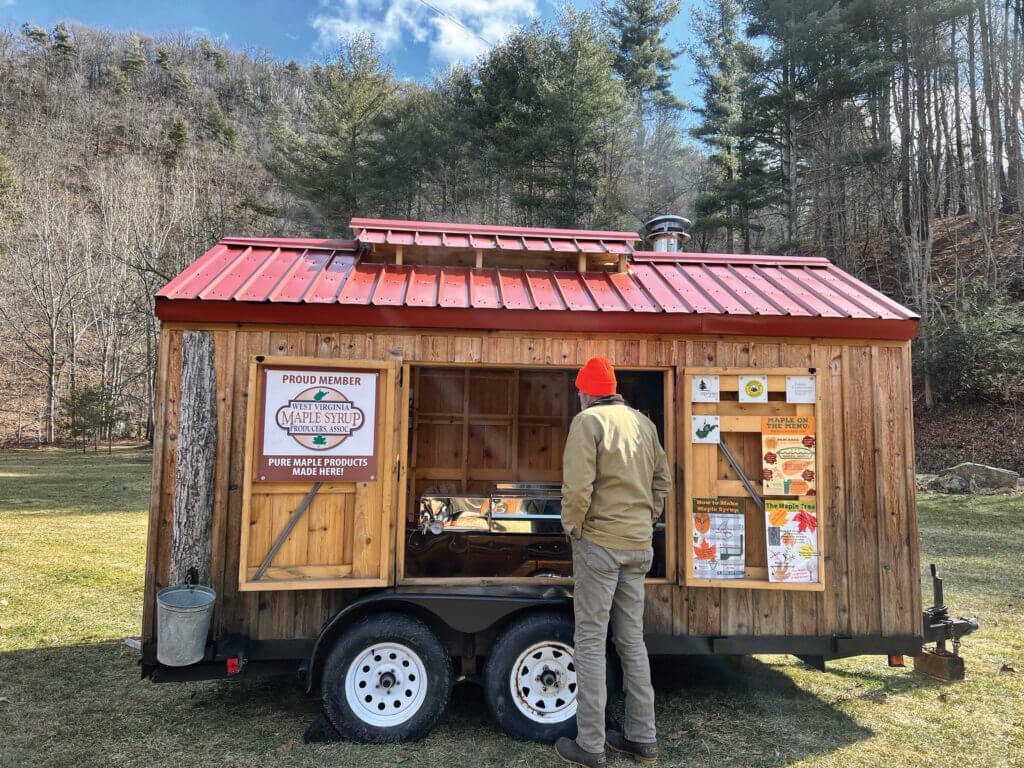
Three years ago, the Appalachian Program at Future Generations University in Pendleton County started celebrating the unique holiday. “We used it as an opportunity to spread awareness of maple syrup production in the state of West Virginia—where producers are located and what they do,” says Lindsay Kazarick, communications associate for the Appalachian Program. “We also provided educational materials before the season really starts for anyone interested in producing maple syrup.” It started as a digital campaign in which they spent National Maple Syrup Day flooding social media with maple syrup–related content, like recipes, handbooks, interviews, videos, and more. The December edition of their monthly webinar series “Out of the Woods” even focused on the delicious nectar with a libations twist. “It’s Maple Mixology, talking to and about local producers using maple syrup and sap to make alcohol. We continue to share that webinar—it’s become very popular and helps highlight local producers and businesses and their creativity,” Kazarick says.
But as the industry has expanded, so have their ideas. Now, they see National Maple Syrup Day is an opportunity for community collaboration and small-business support. “We’ve incorporated local restaurants into the mix and paired them with local producers to produce maple-themed items for their menu,” Kazarick says. This ‘matching service’ is provided by the University’s Appalachian Program and relies on each restaurant’s creativity and each producer’s ability to provide enough syrup. “Typically, the maple-themed menu is only available for that day or during Mountain State Maple Days. Some producers create value-added products that are served at local restaurants year ’round.”
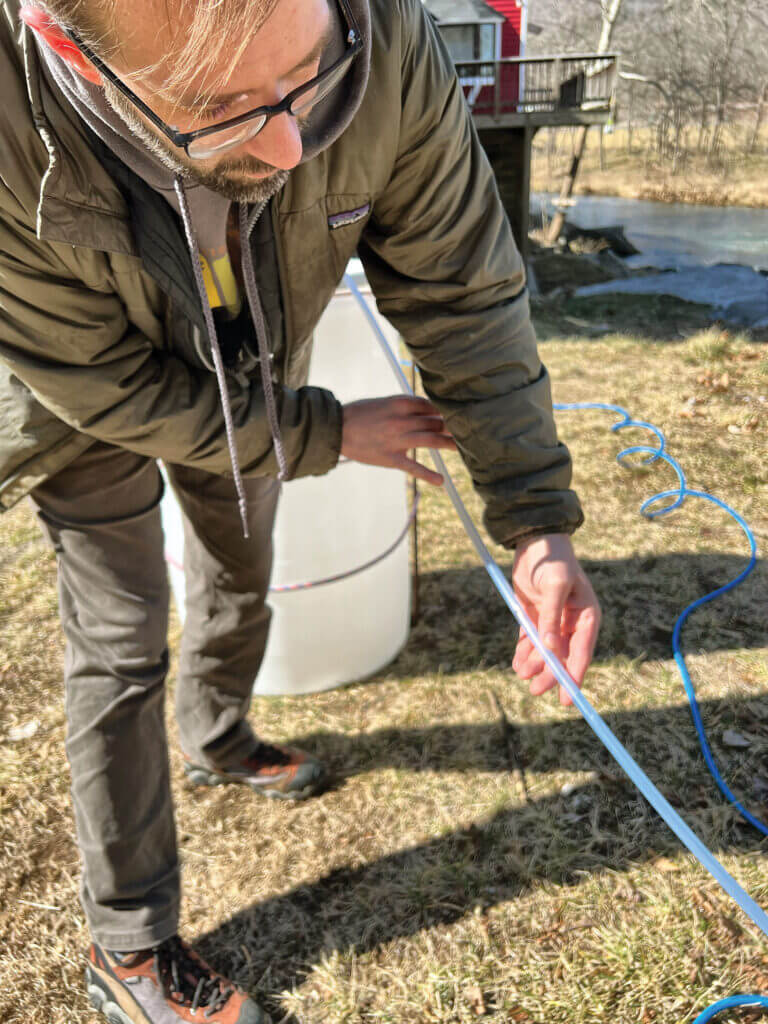
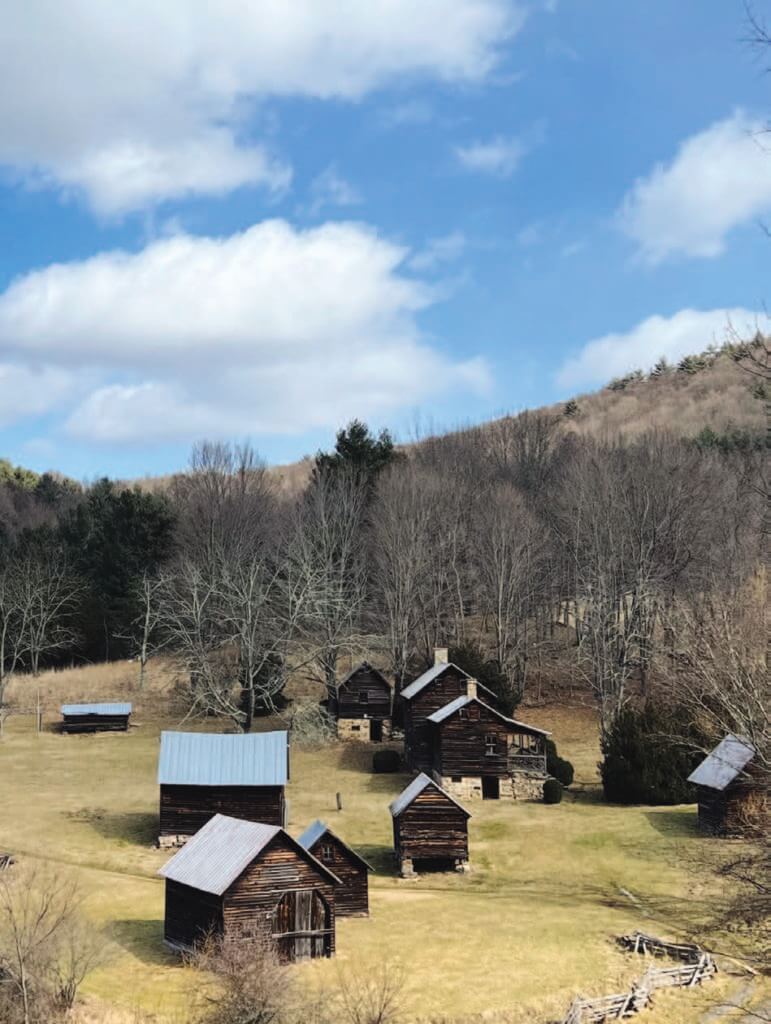
The 2022 National Maple Syrup Day saw many brilliant pairings that brought maple syrup to new heights. Appalachia Kitchen at Snowshoe and Frostmore Farm Maple & More at Dunmore, for example, paired up to bring hungry customers a maple-glazed trout over ginger-fried Chinese black rice, and the restaurant’s 5811 salad was topped with a house-made Maple Balsamic Vinaigrette—both recipes using Frostmore’s syrup. The Moose Lodge in Franklin hosted a moonshine tasting with drinks made from nearby Dry Run Spirits Distillery’s Maple Moonshine. “Typically moonshine is flavored, but this moonshine is made with maple sap right from the tree,” says Kazarick.
Tapping Into It
Pure maple syrup can be bottled and sold as is and used for a variety of things, like cooking and crafting unique cocktails. It can also be used to create something entirely new. Distilleries are adding maple moonshines, whiskies, and bourbons to their distilling schedules. Creative and tasty maple-enhanced products that move away from the traditional syrup continue to find their way onto shelves, like cotton candy, cream, sugar, candy, flavor-infused syrup, and more.
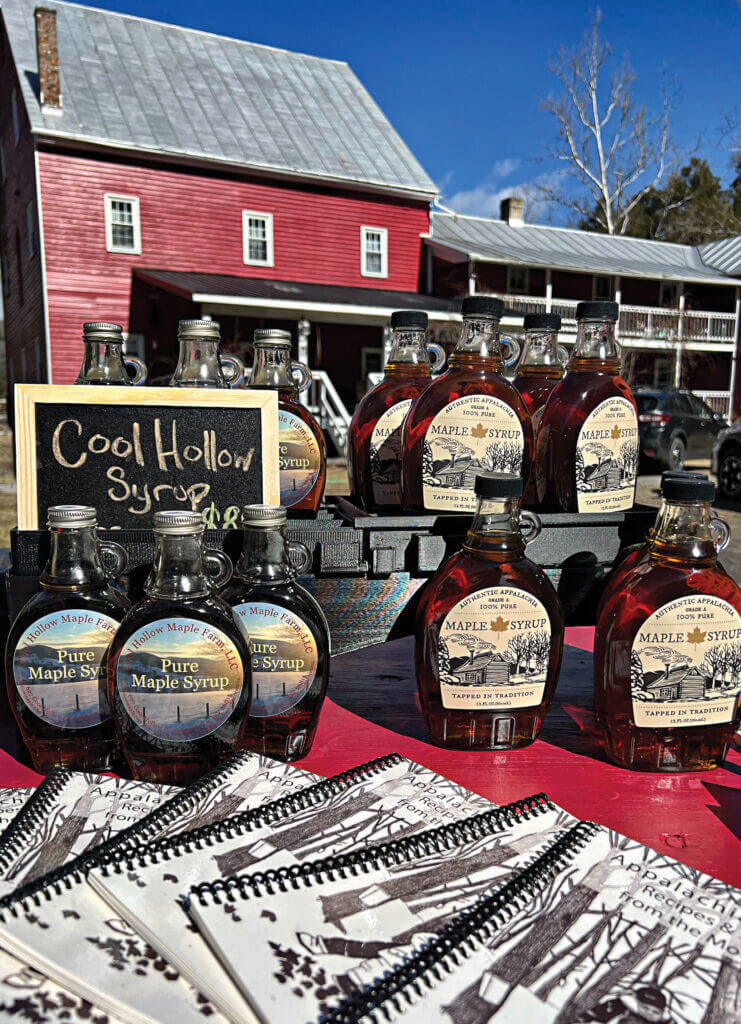
With its growth and reach in West Virginia, National Maple Syrup Day is one of the biggest marketing opportunities for the 2024 Mountain State Maple Days, a celebration through the West Virginia Maple Syrup Producers Association. Mountain State Maple Days releases a comprehensive network of sugarhouses around the state that are opening their literal and metaphorical doors to give curious visitors a look into the work of maple syrup production from the tree to the table.
On February 17 and March 16, 2024, you can visit any participating sugarhouse for facility and sugarbush tours, taste testings, tapping demonstrations, educational resources, shopping opportunities, and other fun events. It’s the perfect chance to start shaking off the winter blues and to learn more about the maple industry in the state. “This year, we will be doing all those same things again, with a fun new component,” Kazarick teases. “We’re really excited to see how it fosters guest interaction.”
In addition to the sugarhouses themselves, West Virginia maple products can be found at a variety of vendor locations throughout the state. Visit www.wvmspa.org to learn more about more than 50 of our unique maple producers and see which sugarhouses are joining in the fun when Maple Days roll back around.
A Sweet Substitute
Many uses for maple syrup don’t require a tall stack of pancakes. One such use: a substitute for sugar. Add a touch of local flavor to your favorite recipes with this helpful conversion chart from Appalachian Maple: Recipes & Stories from the Mountains, published by North Mountain Press for Future Generations University.
2 tablespoons of sugar = 1 tablespoon + 1 teaspoon of maple syrup
½ cup = 6 tablespoons
1 cup = ¾ cup
1½ cups = 1 cup
2 cups = 1½ cups
2½ cups = 2 cups
3 cups = 2¼ cups
Reduce liquid in the recipe by 2 to 3 tablespoons and reduce the oven temperature by 25°.
Looking to tap into something new?
Visit www.wvmspa.org or www.future.edu/syrup-resources to learn more about West Virginia’s growing maple industry and resources to help you get started.

